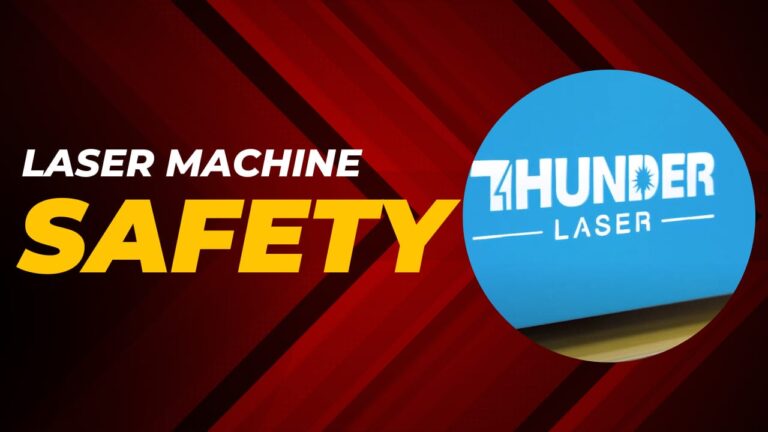Laser engraving technology has become increasingly popular in recent years, and for good reason. The versatility and precision of laser engravers make them an essential tool for many businesses. But with so many models on the market, how do you go about choosing the right laser engraver for you and your specific needs? In this guide, we’ll take a closer look at the factors you need to consider when selecting a laser engraver.
Understanding the Basics of Laser Engraving
Before diving into the specifics of choosing a laser engraver, it’s important to understand the basics of how laser engraving works. Laser engraving uses a concentrated beam of light to create precise, permanent markings on a variety of materials. This technology has a wide range of applications across many different industries, including manufacturing, retail, and promotional products.
Evaluating Your Business Needs
The first step in selecting a laser engraver is to evaluate your business needs. What types of materials will you be engraving? How large are the items you plan to engrave? How frequently will you use the laser engraver? Answering these questions will help you determine the specifications your laser engraver should have.
Key Factors to Consider When Choosing the Right Laser Engraver
Size
Laser engravers come in various sizes, which can impact their capabilities and the workspace required. Consider the maximum size of the items you’ll be engraving, as well as the available space in your workshop.
Desktop laser engravers: These compact machines are suitable for small-scale projects and limited workspace. They are perfect for engraving small items like jewelry, smartphone cases, and name tags.
Large-format laser engravers: These machines are ideal for businesses with larger projects or higher production demands. They can handle materials such as wood panels, signage, and furniture components.
Power
The power of a laser engraver is measured in watts, with higher wattages providing faster engraving speeds and deeper cuts. Your choice of power should depend on the materials you plan to work with and the level of detail you need.
- Low-power laser engravers (20-40 watts): These machines are best for delicate materials like paper, fabric, and thin plastics.
- Mid-power laser engravers (40-80 watts): These machines are suitable for thicker materials and faster engraving speeds. They work well with wood, acrylic, and anodized aluminum.
- High-power laser engravers (80-130 watts): These machines are designed for heavy-duty use and large-scale production. They can engrave and cut through thick materials like metal, stone, and glass.
Material Compatibility
Different laser engravers are optimized for specific materials. Some machines can handle a wide variety of materials, while others are specialized for certain types. Ensure that the laser engraver you choose is compatible with the materials you plan to use.
CO2 laser engravers: These machines are ideal for non-metallic materials like wood, acrylic, glass, leather, and rubber.
Fiber laser engravers: These machines are best for engraving metals, such as stainless steel, brass, and aluminum, as well as some plastics.
Software and Connectivity
The software and connectivity options of a laser engraver can significantly impact its usability. Look for machines that are compatible with popular design software like CorelDRAW or Adobe Illustrator. Additionally, consider connectivity options such as USB, Ethernet, or Wi-Fi to ensure seamless communication between your computer and the laser engraver.
Budget and Warranty
Lastly, consider your budget and the warranty provided by the manufacturer. While higher-quality machines may come with a higher price tag, they often provide better performance and durability. A comprehensive warranty can protect your investment and provide peace of mind.
Maintenance and Support
Aside from assessing the key factors in choosing a laser engraver, you must also consider the level of maintenance required and the support provided by the manufacturer. Regular maintenance is essential to ensure the longevity and optimal performance of your machine.
Cleaning the laser engraver’s components, especially the optics and laser head, is crucial in keeping it clean and free of debris and dust. You should also lubricate the machine’s moving parts regularly to prevent wear and ensure smooth operation. Furthermore, you need to periodically check the alignment of the laser beam and mirrors to maintain engraving accuracy.
In addition to maintenance, a reliable manufacturer should offer comprehensive support to help you get the most out of your laser engraver. Look for the following support features when selecting a laser engraver:
Training: Some manufacturers offer training on how to operate and maintain your laser engraver, either online or in-person. This training can help you maximize the performance of your machine and ensure its longevity.
Technical Support: Ensure the manufacturer provides prompt and efficient technical support, either through phone, email, or live chat. Having access to technical support can help you troubleshoot issues quickly and efficiently.
Community: A user community or forum can be a valuable resource for tips, tricks, and troubleshooting advice from other laser engraver users. You can learn from their experiences and improve your skills.
Assessing the Laser Engraver Market
Now that you know what to look for in a laser engraver and have evaluated your business needs, it’s time to assess the market and compare different models. Take note of the following tips to help you make an informed decision:
- Research: Read reviews and testimonials from other users to gauge the quality and reliability of a specific laser engraver model. Check for customer satisfaction and their experience with the machine.
- Demo: If possible, request a demo or visit a trade show to see the laser engraver in action and get a feel for its capabilities. You can assess the quality of the engraving, the ease of use, and the machine’s build quality.
- Compare: Make a list of your top laser engraver choices, and compare their features, prices, and support offerings to find the best fit for your business needs. Comparing different models can help you find the best value for your money and avoid overpaying for features you don’t need.
Choosing the right laser engraver for your business needs is a crucial decision that can significantly impact your productivity and success. By carefully considering factors such as size, power, material compatibility, software and connectivity, budget, warranty, maintenance, and support, you can find the perfect machine to help your business thrive. Don’t forget to research, demo, and compare different laser engraver models to ensure you make the best investment for your business. With the right laser engraver, you can take your business to new heights of success and efficiency.




